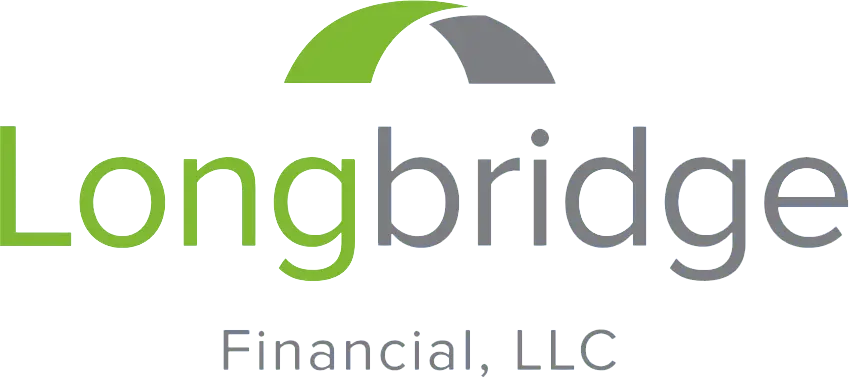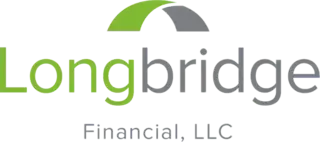Using a 'Blended Income' Strategy Can Help Boost Your Retirement Cash Flow

More Americans are expected to reach retirement age this year than ever before. For many folks hitting that milestone, a difficult reality may await. That's because fewer people are feeling secure with their plans.
According to Fidelity Investments' 2025 State of Retirement Planning study, while two-thirds of people in their planning years feel confident with their prospects, that figure is seven percentage points lower than last year. Meanwhile, 70% of retirees say that rising living costs have eroded their savings.
Fidelity's findings aren't the only indication of trying times ahead for retirees: A recent survey from The Senior Citizens League found that 31.8 million older Americans get by on less than $2,000 a month, and in a TIAA survey released last month, 44% of respondents said they expect Social Security to be their primary source of income in retirement.
Being that dependent on Social Security benefits is a slippery slope toward financial hardship. One way to build confidence and avoid those troubles is with a comprehensive retirement plan, which can entail using your investments as part of a blended income strategy to help offset recurring (and unexpected) costs throughout your golden years.
What is blended income?
Put simply, blended income means having several sources of money to draw from during retirement.
The benefit is clear when looking at the average monthly Social Security benefit, which stood at about $2,000 for most of 2025. That considerably lags older Americans' monthly expenditures, which average $5,007 for those ages 65 to 74, according to Federal Reserve economic data.
Creating a stream of blended income can help retirees fill that gap. Nearly 60% of retirees with a blended income strategy reported having a better lifestyle after retiring, compared with 49% of retirees who used only one additional income source aside from Social Security, according to a 2023 Goldman Sachs survey. Retirees using a blended income strategy also reported higher levels of satisfaction with their money.
Blended income combines multiple sources of both fixed and variable income to create diversified, steady cash flow. Fixed income includes predetermined amounts from sources like annuities, bonds, pensions and Social Security, while variable income comes from sources where your money can ebb and flow, such as traditional or Roth IRAs, employer-sponsored plans like 401(k)s and taxable savings and investment accounts.
Each type has its benefits and risks, according to a report from investment advisory firm Vanguard, which recommends using both regular (aka fixed) and variable sources to produce retirement income. While fixed income provides predictability and insulates you from market swings, it also precludes you from accessing the higher returns equities can deliver. Alternatively, variable income is more difficult to forecast but provides a higher risk-reward ratio. Combining them allows you to reap the benefits of each while limiting the downsides.
Before planning for how to diversify your retirement income, you first need to establish your risk tolerance. "Finding that sweet spot is the first thing that we do with a client," says Jaime Ruff, certified financial planner and senior wealth advisor at HB Wealth. "Then we can start thinking about the income construction."
Understanding your risk tolerance can help you figure out how to best approach potential deficits between your expected retirement income and your likely expenses.
"We prepare a financial plan that considers all the sources of income that are not in their investments — like a pension or Social Security or even a post-retirement gig," says Ruff. "Then we work into a long-term projection where you deduct expenses, and there's this line, then, for what total return they need to meet their goals."
Once that line is determined and you know what total return is required, the next step in crafting a blended retirement income plan is determining which sources of fixed and variable income will factor into the equation.
Fixed retirement income
Beyond Social Security, fixed retirement income is often associated with annuities, bonds and defined benefit plans (i.e., pensions). It can also include cash alternatives like certificates of deposit (CDs) and nuanced financial instruments like mortgage-backed securities.
Annuities, which have increased in popularity, are contracts issued by insurance companies that provide an income stream to the purchaser in exchange for premiums they have paid. Notably, these products are not the same as life insurance policies that only pay benefits when the insured dies. While there are both fixed and variable annuities, fixed annuities provide guaranteed returns — for a term or the remainder of your life — and are not linked to market performance.
Annuities can carry high costs, though. For one, you'll owe a premium, which can be paid as a lump sum or in installments. On top of the premiums, the sum of commissions, expense ratios and other fees can make annuities more costly than most other investments. The commission for a 10-year annuity, for example, can range from 6% to 8%, compared to 0.5% to 2% for stocks and bonds.
"I like fixed income. I like guaranteed income," Ruff says. "It's just the cost of getting an annuity is sometimes really high." He prefers bonds, noting that when they mature, you can decide to use the principal as income or reinvest it. This can be achieved through bond laddering — creating a timeline with multiple bonds carrying varying maturity dates, which allows you to either capture the proceeds as income or reinvest them to continue growing your money.
Laddering is particularly appealing to those with lower risk tolerances. Ruff suggests Treasurys for those looking for safety and guaranteed income, noting that they are "theoretically the safest bond in the world" since they're issued by the federal government. He also recommends corporate bonds, which have incredibly low default rates.
"Bonds are like the ballast in a ship — they help steady things," Ruff says. "I like to see clients have several years worth of cash and bonds available to meet their needs. So if the stock market drops a lot, they still have plenty of things in their portfolio that don't drop."
Since the core concept of a blended income strategy is diversifying your sources, combining Treasurys, corporate bonds and even cash equivalents like CDs can provide numerous sources of fixed income to supplement Social Security.
Variable retirement income
Variable income provides greater access to your funds than fixed income, but it carries less predictable yields. Traditionally, sources of variable income include investments made through a 401(k), IRA or brokerage account. However, it can also include income generated from alternative assets such as real estate.
When considering how to invest for variable income, be mindful that equities (i.e., stocks, mutual funds and ETFs), whether in a tax-advantaged retirement account or normal brokerage account, carry higher risk. Once retired, you should focus on wealth preservation and income generation — not share appreciation — as older investors have less time to recover from losses.
"A lot of people put it all in stocks," Ruff says. "And the risk is, at some point, the stock market is going to go down, and a lot of people will lose a lot of money when it does."
That's why experts say it's prudent to focus on conservative holdings as opposed to growth stocks. This can be accomplished with a combination of income-producing equities such as bond funds (which pay dividends unlike individual bonds that are tied up until they reach maturity), dividend ETFs and stocks in sectors known for slower growth and lower volatility.
"Stocks with a reliable history of consistent or steadily increasing dividend payouts are likely to be the most attractive to consider for this purpose," according to a report from U.S. Bank.
Still, equities carry an elevated risk-reward ratio, so you'll want to balance them with other income streams. Bank products such as high-yield savings accounts and money market accounts offer additional sources of variable income while providing a layer of safety. The APYs for those types of deposit accounts are not fixed, but they are typically protected by FDIC or NCUA insurance and provide better liquidity than fixed-income alternatives like CDs.
"Once you quit your job, you no longer have employment income," Ruff says. "So you need to consider safety as part of your strategy."
Editor's note: This story was originally published in March 2025. We've updated it to feature current information and statistics.
More from Money:
An ETF for Every Age: Retirees Should Kick Back (and Enjoy the Dividends)
The Popular 4% Rule for Retirees Just Got an Update
Most Americans Now Say Retiring at 65 Is No Longer Realistic






